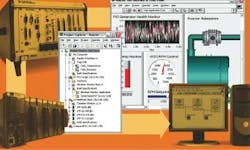Software Platform Distributes Intelligence, Manages Projects
The LabView graphical development platform from Austin, Texas-based National Instruments (NI) pioneered the use of block diagrams and virtual instruments (VIs) for test, measurement and control system design. With the introduction of LabView 8, the nearly 20-year-old platform matures from a single-processor, single-instance environment to embrace distributed processing for multi-developer, large-scale applications.
Shelley Gretlein, LabView Real-time and Embedded group manager, summarizes the three major benefits of this new release: it significantly reduces development time by leveraging Express VI technology; it streamlines team-oriented application development, with LabView Project; and, it distributes intelligence across multiple processors by designing and synchronizing intelligent devices and components.
LabView Express technology, which was introduced in the LabView 7 release, reduces development time with tools that simplify common measurement and automation tasks into higher-level, interactive function blocks. This aids engineers in communicating with data acquisition and control devices and in modifying execution parameters, such as acquisition rate, during run time. Release 8 adds 35 new Express VIs to the original 38 VIs in release 7, and includes an I/O Assistant and Instrument Driver Finder. NI says it receives more than 20,000 visits per month to its Instrument Driver Web pages, where users can download drivers for a vast selection of test, measurement and control equipment.
To accommodate larger, more complex, multiprocessor applications, release 8 includes the new LabView Project. For software development teams, Project helps with the management and reuse of large amounts of code, packages applications for deployment, and ensures that regulatory and compliance issues are addressed. LabView 8 addresses several challenges in developing applications for distributed computing, including programming multiple processors, integrating diverse I/O, and sharing and synchronizing data. The release offers deterministic Ethernet and a new distributed communications protocol, through Shared Variables that abstract the protocol transport layer to share data with any node in the system, including real-time nodes, historical databases and Web-based supervisory consoles. It also supports protocols such as OPC, TCP/IP, and Modbus TCP, for connectivity to third-party hardware such as programmable controllers, Modbus devices and OPC servers.

